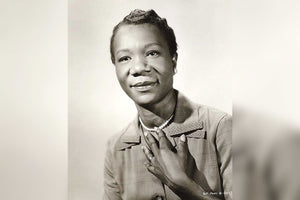Birthday – February 12, 1881
Who was Anna Pavlova?
Anna Pavlovna Pavlova was a prima ballerina from the Russian race and is the most celebrated ballerina dancer during her time of 19th to 20th century. She studied at the Imperial School of Ballet in 1899 and became a prima ballerina in the following year.
Five facts about Anna Pavlova
- At 10 years of age, she was accepted into St. Petersburg Imperial School of Ballet after garnering flying colors on her entrance exam.
- While on her China tour, she made 37 turns on top of an elephant that is moving.
- She’s a pet lover, and throughout her life, she had many pets such as cats, dogs, birds, and swans.
- There is a popular dessert named after her – “Pavlova.” It is famous in New Zealand and Australia.
- She danced over four thousand performances between the years 1913 to 1930.
Inspirational quotes from Anna Pavlova
“No one can arrive from being talented alone, work transforms talent into genius.”
“Success depends in a very large measure upon individual initiative and exertion, and cannot be achieved except by a dint of hard work.”
“Where there is no heart there is no art.”
“If I could have said it, I shouldn’t have had to dance it.”
“To follow without halt, one aim; there is the secret of success. Success? What is it? I do not find it in the applause of the theatre; it lies rather in the satisfaction of accomplishment.”
“Although one may fail to find happiness in theatrical life, one never wishes to give it up after having once tasted its fruits.”
Biography of Anna Pavlova
Early Life
On February 12, 1881, in St. Petersburg, Russia, Anna Matveyevna Pavlovna Pavlova was born. Her parents are Lyubov Feodorovna, a washerwoman, and Matvey Pavlov, a reserve soldier.
There was speculation when she was young that her mother had an affair with a certain banker named Lazar Poliakoff, so Anna’s biological father is unknown. When she was young, she told people that there is a man named Pavel who was once married to her mother but died while she was a toddler. This Pavel is still a mystery and is still questioned by biographers of Anna Pavlova.
When she was 8 years old, Anna and her mother were able to watch The Sleeping Beauty in Mariinsky Theatre in St. Petersburg, and it was the first ballet performance she saw. This gave the little girl the idea of becoming a ballet dancer, which her mother supported. After two years, she was accepted into St. Petersburg Imperial School of Ballet after taking the entrance exam and passing with flying colors.
Pavlova’s teachers Ekaterina Vazem and Pavel Gerdt, recognized the extraordinary talent she has for dancing at such a young age. Combined with her dedication and ambition, Pavlova knew her way on how to become successful in her chosen career. She graduated from St. Petersburg Imperial School of Ballet at 18 and transitioned into a prima ballerina in the making.
Career
Pavlova graduated from ballet school as a coryphée, so she skipped the usual initiation in ballet career, which is dancing in large groups. She immediately danced with smaller groups, and during her debut, she danced together with two ballerinas in “La Fille Mal Gardee.” Her first company performance was held in Mariinsky Theatre, where she first started dreaming of becoming a ballerina.
On every performance she had, her critical acclaim and fame continued to increase. In 1905, Anna Pavlova’s career breakthrough happened with her performance as the lead solo dancer in The Dying Swan. Michael Fokine choreographed her dance, and Camille Saint-Saens produced the music. Anna Pavlova made the audience relate to both how fragile and precious life is because of her facial expressions and delicate dance movements. This performance of Anna soon became her signature role – The Dying Swan.
Pavlova also danced a part in Giselle, which is considered as one of the most difficult. Shortly after, she became a prima ballerina, just seven years after her career started. Her first tour happened in several cities in Europe, and after a successful first tour, she agreed to a second tour. She also had a tour in the United Kingdom and the United States with her frequent partners Laurent Novikoff and Pierre Vladimirov.
In 1911, Pavlova created her own ballet company, and hence she was able to control and choreograph her own roles. Her husband, Victor Dandre, becomes in charge of her tours. She toured together with her company dancers all over the world, influencing and inspiring younger kids to love ballet.
Death and Legacy
In 1930, after she celebrated her Christmas vacation in England, she rode a train to The Hague. While going home, the train was involved in an accident, forcing her to wait outside the train platform on a snowy and cold evening. This causes her to acquire double pneumonia, which quickly worsened. Pavlova’s last wish while on her death bed was to see her swan costume for the last time. On January 23, 1931, she died in The Hague, Netherlands.
Anna Pavlova was one of the most influential and celebrated dancers during the late 19th and early 20th centuries. Several portraits are captured, which shows her passion for dancing. Her legacy still holds on and is celebrated in several dance schools and societies. Several companies were also made and established in her honor to inspire the dancers of the future generation.
![]() Fast Shipping
Fast Shipping![]() Subscribe to our Newsletter
Subscribe to our Newsletter![]() 🌟 New Global Competition 🌟
🌟 New Global Competition 🌟















